Vista SMB 2.0 exploitable hole points to need for new filters

Nearly two years ago, I proclaimed Microsoft's adoption of Server Message Block version 2 the #6 of ten best new features of Windows Server 2008. Essentially, it provides a way for servers utilizing the Common Internet File System to utilize modern filing tools such as symbolic links and transaction batches, to expedite the process of sending large files over the Internet.
It has taken this long for anyone to find what was described earlier today as a glaring hole in Windows SMB 2.0 security, but it's an embarrassing little hole nonetheless: A security researcher discovered that if you get the order of the words in the SMB 2.0 message headers wrong, in such a way that you end up sending an ampersand (&), where a zero should be in the high word of the Process ID field, then you can end up sending a message block that could literally crash the remote recipient. Conceivably, an exploit could be crafted that could remotely crash a Vista-based client.
Windows 7: Don't upgrade, says FSF, your civil rights are in jeopardy

If you're collecting reasons people have given for avoiding Windows 7 purchases and upgrades, add this one in a little shelf all to itself: It is a threat to your civil liberties, according to the Free Software Foundation.
Today is the official launch day of an FSF fundraising campaign whose stated goal is to bombard employees of 499 of the world's Fortune 500 companies (the one they left out probably wouldn't make any difference) with letters claiming, among other assertions, that Microsoft is engaging in a clandestine spy operation, masquerading under euphemistic names such as "Windows Genuine Advantage" (one example the FSF lists), invading homes, offices, and even schools.
Windows 7: Obviously I've struck a nerve
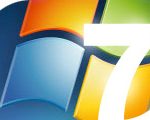
I guess I stirred up quite the beehive of activity with my last column, Windows 7 is coming: Don't upgrade. Before I continue, I wanted to share a few final thoughts on what's clearly been the most controversial piece of writing I've published in a while.
First, I'm a big boy, and I've got a thick skin. If you didn't agree with what I had to say (and many of you didn't) I promise you I didn't skulk back to my office with a sniffle in my nose and a tear in my eye after reading the comments. Pro or con, agree or disagree, if I get readers to think critically about a given issue, I've accomplished my goal. I don't particularly enjoy fanboys agreeing with my every word, so don't expect my writing to reflect some kind of middle-of-the-road festival of milquetoast mutual admiration.
Windows 7 upgrades, Family Pack will come to Europe after all
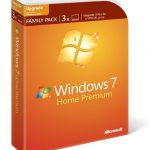
On September 1, Microsoft announced this morning, it will be making upgrade editions of Windows 7 available to European customers, as originally planned, apparently with Internet Explorer 8 included. These editions will be publicly available on the originally planned global availability date of October 22, although pre-orders will begin September 1.
This leaves a one-week window in which European customers may continue to pre-order full versions of Windows 7 Home Premium at the upgrade price, which is currently €119.99 for most European customers, £79.99 in the UK.
While we do know that €119.99 will be the upgrade price for Home Premium from September 1, and that the full version price will be somewhat higher, we do not know as of yet the specific breakdown for the upgrade prices for the Professional and Ultimate SKUs. These prices did not yet appear on Microsoft's online retail sites in foreign countries, as of 12:15 pm EDT Monday afternoon.
Windows 7 is coming: You should upgrade

I'll begin by saying that Carmi Levy is my very good friend, and I do admit that most of the time, he and I think along the very same wavelength. I met him through our mutual friend Wolfgang Gruener at TG Daily, and we've carried on a very fruitful dialogue about the IT industry ever since. That, and he has this way of making Winnie-the-Pooh berets look really cool.
We do disagree on one point today, and I think the nature of that disagreement would be beneficial to folks who are wrestling with the question Carmi brought up this morning: "To upgrade or not to upgrade." His article is worth reading, so rather than summarize it here, I'll let Carmi speak for himself.
Windows 7 is coming: Don't upgrade
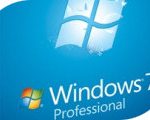
To upgrade or not to upgrade: It's the issue of the moment for Windows users everywhere as the hype machine for the October 22 Windows 7 release gathers steam. And as we gaze at our existing machines, either running a snappy but outdated XP or a pokey but still slick looking Vista, and wonder whether we should be planning a late night trip to the big box store for our very own copy, I've got one word for you: Stop.
There are plenty of reasons why you'd want to refresh your existing machine with a cool new operating system. Pre-release versions of Windows 7 have displayed impressive performance, stability, and usability. Device compatibility -- a major bugaboo early on for the ill-starred Vista -- is much improved. It's smaller and lighter than the OS it ostensibly replaces, a nice reversal from the years-long tidal wave of ever-more-bloated products from the world's largest software vendor. Win7 scales better and can take advantage of more memory and multicore processors. That the new OS looks cool enough to not embarrass Windows fans when they run into Mac zealots at parties is an added bonus.
Lower profile XP Mode (N) for Windows 7 omits Media Player 9

Download Windows XP Mode (N) Release Candidate for Windows 7 from Fileforum now.
In a move which could very rapidly multiply the number of total users of Windows XP N way beyond the paltry number of users, mostly in Europe, who invested in the product in 2005, Microsoft this morning quietly released a separate version of the release candidate for its XP Mode virtualization system for Windows 7. This version creates a virtual envelope for Windows XP N, the version Microsoft created without Media Player 9 pre-installed, to appease the European Commission.
Windows XP SP3 runs browsers 13% faster than Windows 7 RTM
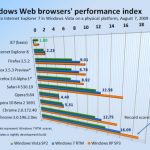
In a set of comprehensive Windows Web browser performance tests conducted by Betanews on August 7 -- our first test of browsers running on the final Windows 7 RTM Build 7600 distributed by Microsoft yesterday -- the five major families of browsers tended to run 13% faster on Windows XP Service Pack 3 than on Windows 7, and 29% faster than on Windows Vista Service Pack 2.
That reflects a decline in the speed gap between XP and Win7 of about 1%, from tests conducted comparing XP-based browsers to those running on Windows 7 Release Candidate Build 7100. Some browsers are faster in Windows 7 RTM, although Mozilla Firefox 3.5.2 ran just a tick slower.
Windows 7 Upgrades: Are they going to be too much trouble or just about right?

Is Microsoft asking too much of consumers and small businesses planning to upgrade existing Windows XP or Vista PCs to Windows 7? That's the question I asked several analysts after reviewing a chart Microsoft provided to veteran technology reviewer Walt Mossberg.
Out of 66 upgrade scenarios, only 14 allow for "in-place" upgrades. The majority of scenarios require "custom install," which means either installing Windows 7 to a new directory or onto a clean hard drive. While data can be backed up and recovered, applications would need to be reinstalled.
Windows XP forever? The OS that just won't die
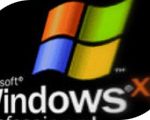
Microsoft has a problem on its hands. Or more precisely one problem with three seemingly contradictory components:
Windows XP is too good for its own good. It needs to die for the company's sake. It won't die because nothing else -- not even Windows 7 -- currently approaches it.We're closing in on eight years since XP first hit the market and began the long process of making us finally forget we ever used Windows 95, 98, and Windows Me. By anyone's standards, it's been one of Microsoft's most visibly successful products. It still runs on some 60% of all PCs years after it was supposed to have been retired as a front-line offering. It's sold around 800 million copies since its initial release. And if piracy is the sincerest form of flattery, hundreds of millions more illegal copies are in use across the globe. In an age where icons are in desperately short supply, this is as iconic a product as it gets.
Windows 7 RTM still available via MSDN/TechNet despite heavy traffic

Right on schedule Thursday morning, what can probably be described as the "latest final edition" of Build 7600 of Windows 7 was made available to subscribers to Microsoft's MSDN and TechNet services for developers and admins. This will enable them to begin the process of finalizing upgrades to applications and to the systems using them, prior to the general availability date for the operating system, which remains set for October 22.
Absent from this morning's distribution, though not surprisingly, was any hint of "Windows 7 E," the browserless build of the OS that had been slated for distribution exclusively in Europe in the event that the European Commission had not reached a decision on the company's browser selection proposal. Last month, Microsoft presented a formal proposal to the EC that modeled a Web-based selection system for installing default browsers, one which presented Mozilla Firefox, Apple Safari, Google Chrome, and Opera alongside Internet Explorer 8, in a menu that all European Windows users would see -- not just those with Windows 7.
Testers claim discovery of serious CHKDSK bug in Windows 7 RTM build
A contributor to the online forum TheHotfix.net has provided visual evidence of what appears to be a serious memory leak caused by the CHKDSK hard disk integrity checking utility included with a build of Windows 7 that has been tagged for RTM. The bug appears to occur during phase 4 of the disk check, and can push resource usage to the 96% level.
Tester Jordan M. Jacob provides a picture of the memory leak in progress, as depicted in Windows Task Manager, a portion of which is excerpted here. (It doesn't bode well for the integrity of the test that Apple's iTunes drivers also appear to be running.) Jacob goes on to warn that the leak is capable of sending the OS into the dreaded blue screen of death (BSOD).
EC silent thus far over Microsoft's Windows 7 E tactics shift

When Microsoft originally presented its proposal to the European Commission last July 24 to offer Windows 7 to European customers without Internet Explorer 8 pre-installed as a requirement, it showed the EC a picture of how it could present customers with a choice of Web browsers, including IE8 but also Firefox 3, Safari 4, Google Chrome, and Opera. (The order of appearance may have been according to estimated usage share.)
As the company's proposal (DOC file available here) read, "Nothing in the design and implementation of the Ballot Screen and the presentation of competing web browsers will express a bias for a Microsoft web browser or any other web browser or discourage the user from downloading and installing additional web browsers via the Ballot Screen and making a web browser competing with a Microsoft web browser the default."
Cat-and-mouse game begins: Microsoft blacklists leaked Windows 7 key

The Lenovo OEM key that leaked earlier this week and allowed Windows 7 Ultimate to be cracked is being blacklisted, according to a blog post last night from Alex Kochis, Director of Genuine Windows at Microsoft.
Kochis says, "Yesterday we were alerted to reports of a leak of a special product key issued to an OEM partner of ours. The key is for use with Windows 7 Ultimate RTM product that is meant to be pre-installed by the OEM on new PCs to be shipped later this year. As such, the use of this key requires having a PC from the manufacturer it was issued to. We've worked with that manufacturer so that customers who purchase genuine copies of Windows 7 from this manufacturer will experience no issues validating their copy of Windows 7. At the same time we will seek to alert customers who are using the leaked key that they are running a non-genuine copy of Windows. It's important to note that no PCs will be sold that will use this key."
Windows 7 Family Pack priced at $150
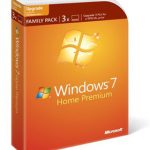
Microsoft has placed a $149.99 price tag on the Windows 7 Family Pack, which lets as many as three PCs in a single household upgrade to Windows 7 Home Premium edition. Users in Canada will pay $199.99.
Microsoft's official blogger Brandon LeBlanc confirmed the three-license pack last week, but did not include the price.
Recent Headlines
BetaNews, your source for breaking tech news, reviews, and in-depth reporting since 1998.
© 1998-2025 BetaNews, Inc. All Rights Reserved. About Us - Privacy Policy - Cookie Policy - Sitemap.